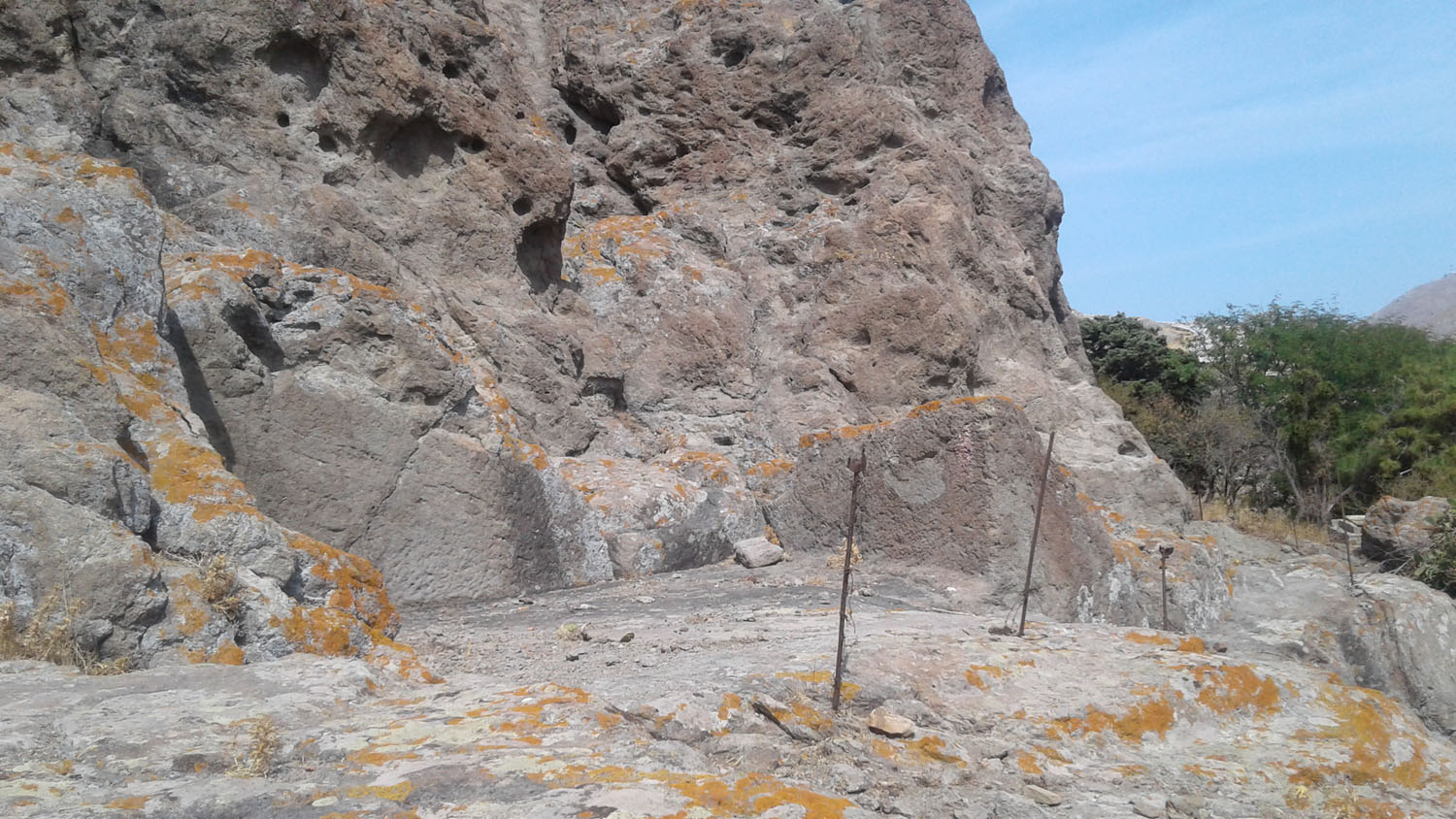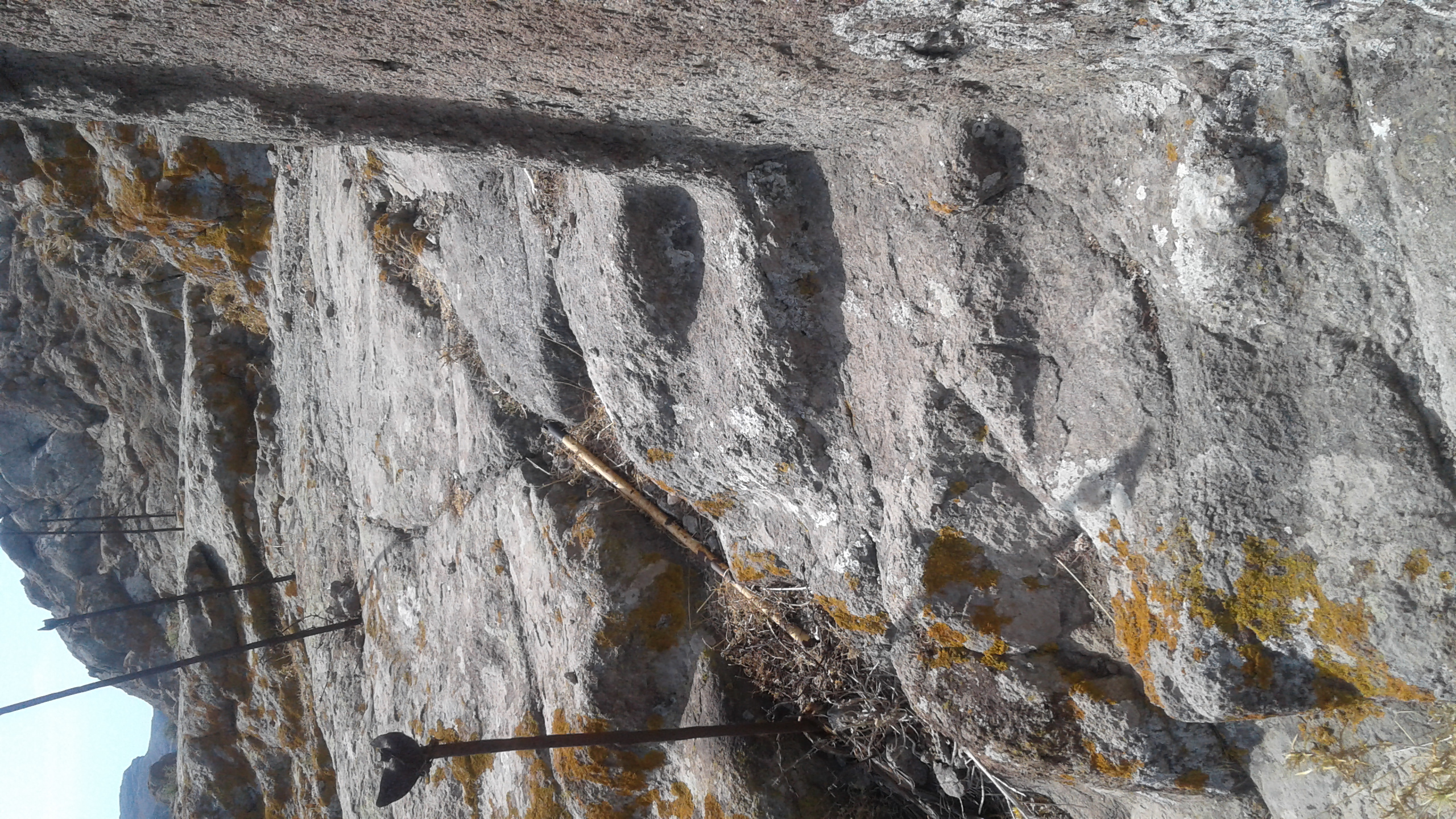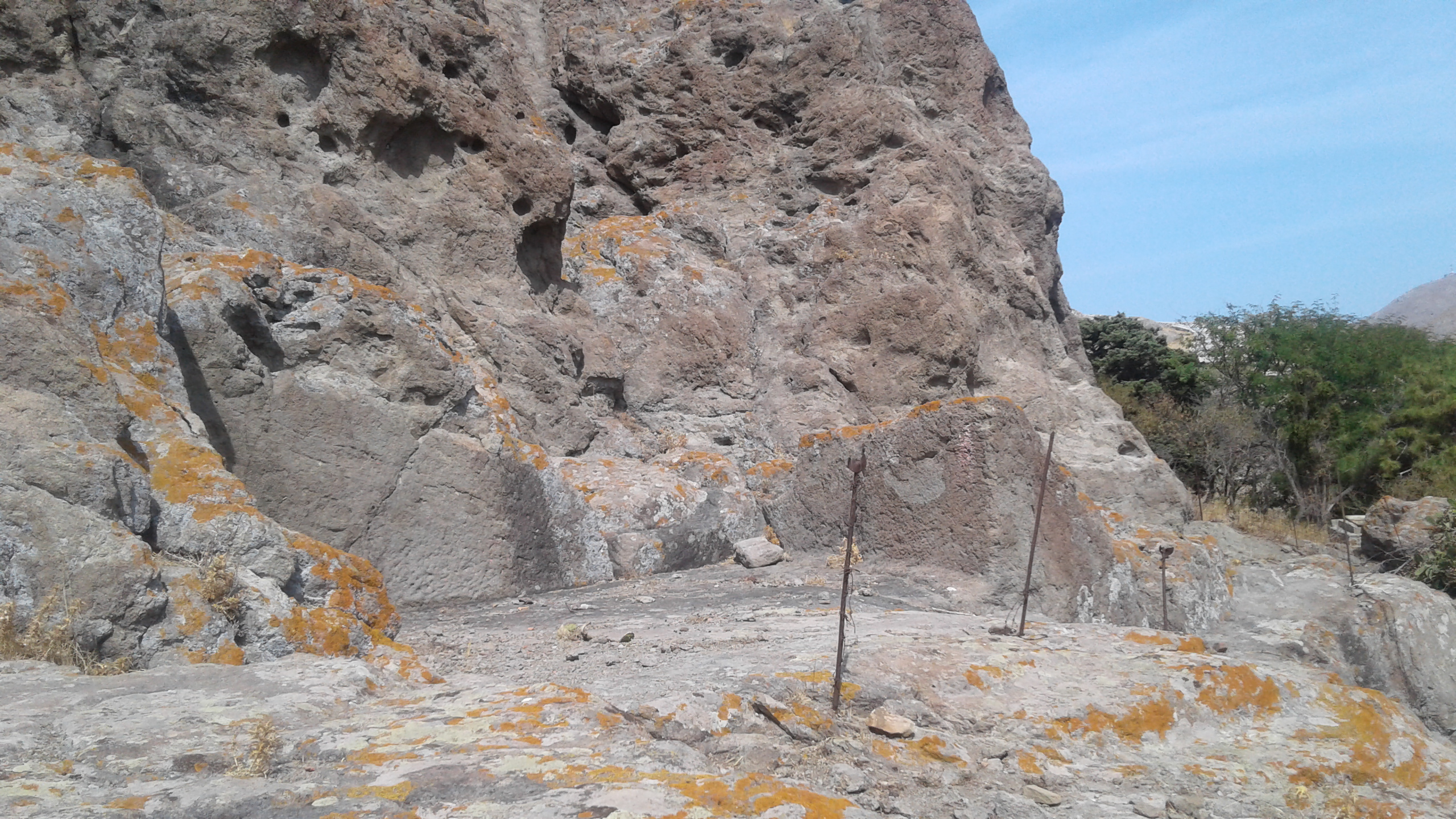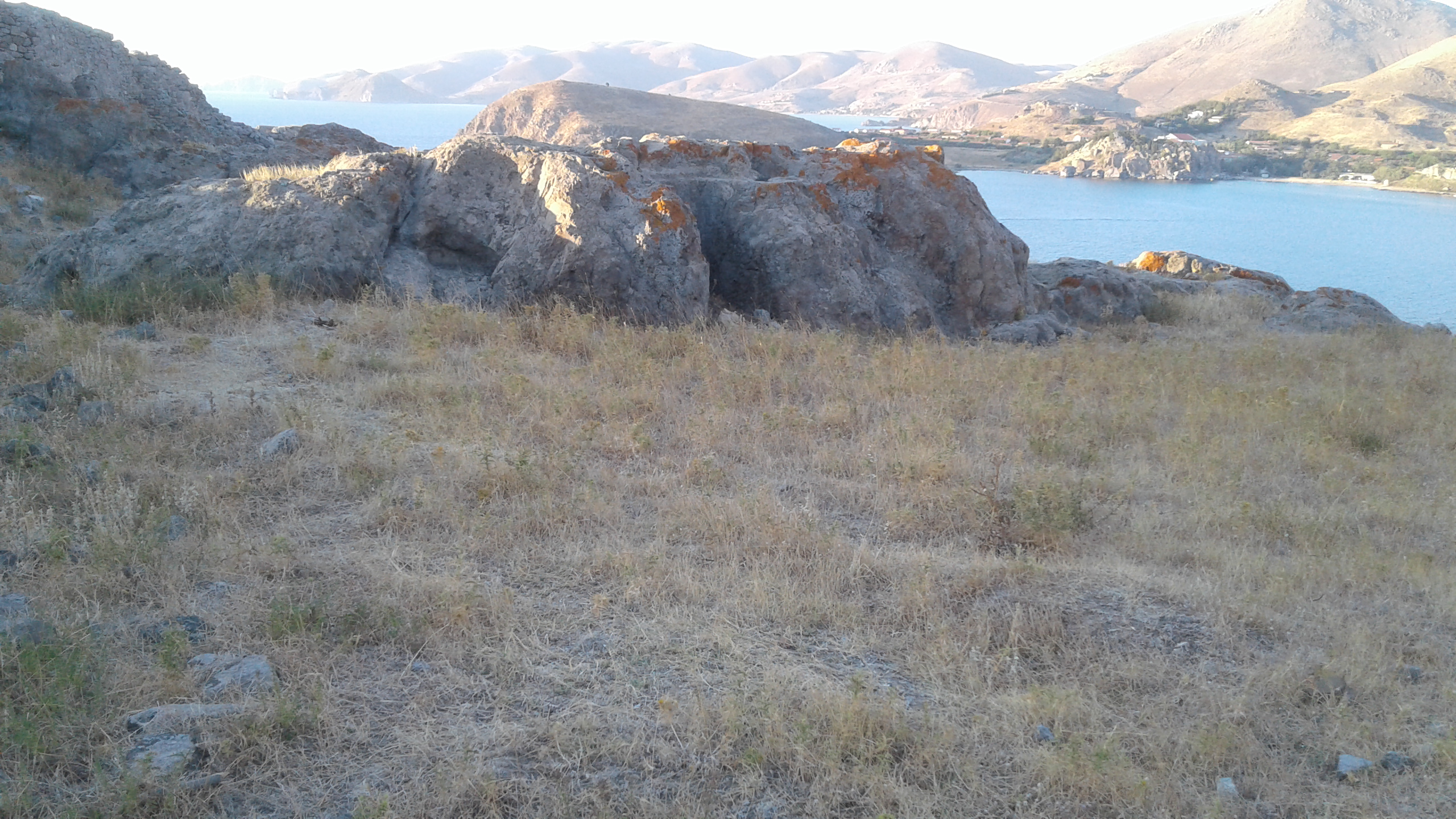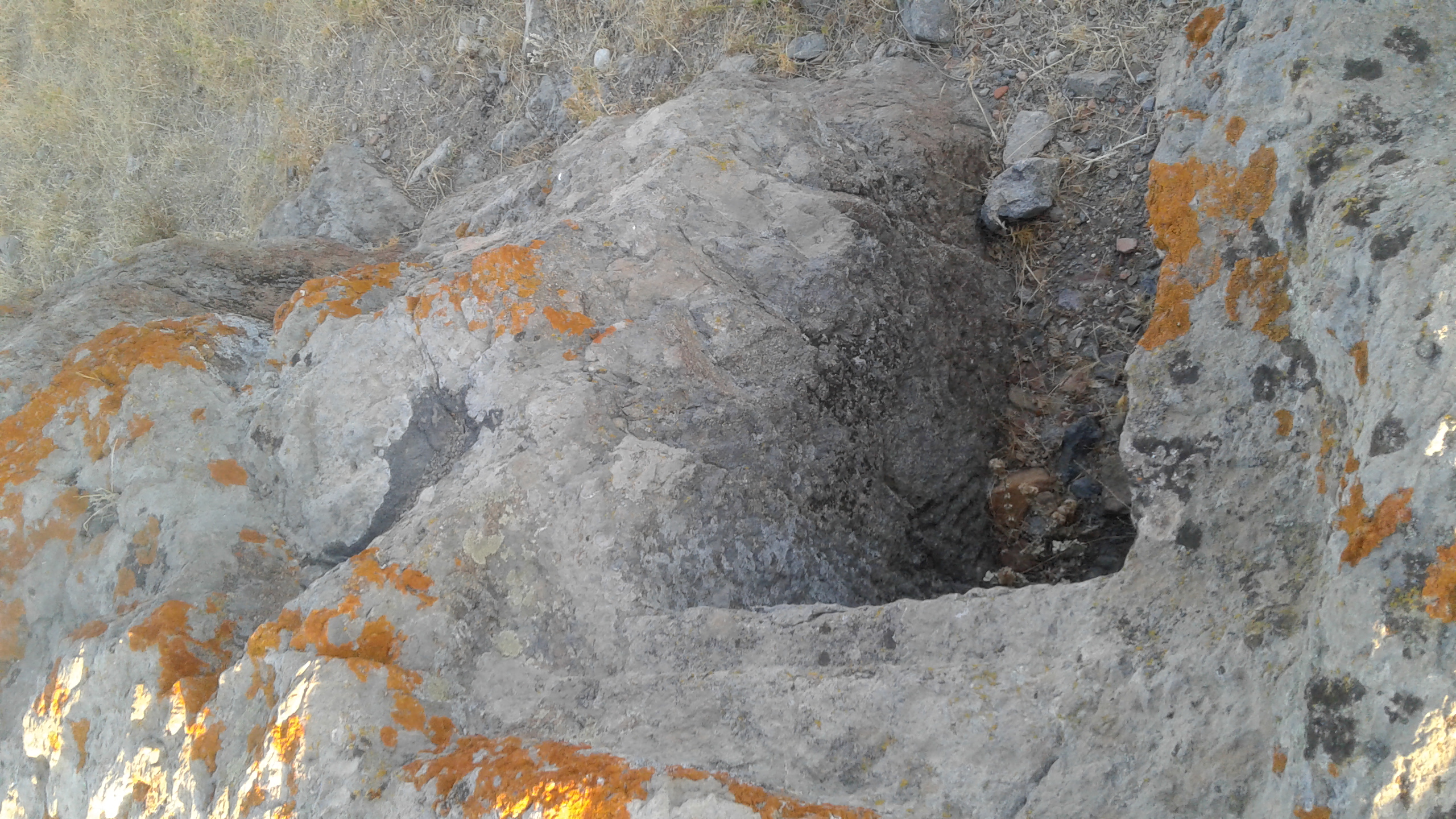Habitation and Rock-Cut Constructions
2000-1650 BC
The importance of the peninsula was obvious already from prehistoric times. Investigations have revealed that human activity at this site can be traced back to even before the Middle Bronze Age (2000-1650 BC). Many rock-cut constructions of different size have been identified at various heights, attesting the use of the space. These constructions included rooms, staircases, ramps and pathways, apertures and concavities, channels, conches, flat areas and rock-cut chambers, as well as petroglyphs incised in niches, on walls and floors of the rock-cut spaces or close to concavities. The natural element is combined with the artificial, as the manmade construction is incorporated in physical formations and various natural out-thrusts. The extent and the complexity of the rock-cut constructions indicate a site of many different functions, even though the use of some constructions is unclear. Without doubt, because human presence on the peninsula is diachronic, some earlier constructions had changed use with the passage of time.
Habitation
Many constructions attest habitation, such as the rock-cut ‘rooms’, visible in the sides and the floors of which are postholes for timber posts that probably supported roofs of branches and trunks of small trees.
The constructions at higher points or points visible from sea and land could have been look-out posts for surveying the sea. Maritime circulation was monitored to espy ships approaching land, not only for reasons of defence and protection but also for reasons of safe navigation, due to the existence of shallows and reefs in the harbour (the reefs were destroyed and the seabed was deepened in the 1950s).
Metallurgical Activities
Other rock-cut constructions may have been associated with metallurgical activities. This is not unlikely, because Lemnos was, from the Early Bronze Age, a crossroad of sea lanes specifically for procuring metals and was itself the first centre of trading, processing and circulating metal. Ancient authors (such as Hellanicus of Lesbos, Fragmenta Historicum Graecorum, Hellanici fragmenta, 112,113) refer to the first inhabitants of Lemnos, the Sintians, as those who discovered fire and were the first to fashion weapons. The island’s reputation as one of Greece’s most important centres of worship of Hephaistos, god of fire and smithing, reveals the inhabitants’ relationship with metallurgy and metal-working. Various studies have concluded that the raw material with which the Lemnians made bronze objects came from the region of Afghanistan. The quest for metal ores beyond the sea and their exchange for Lemnian wine is known already from Homer, who in the Iliad (VII, 467-475), states that the king of Myrina, Euneos, supplied the Achaeans fighting at Troy with wine and received in exchange bronze, iron and other goods. The working of metal locally is documented also by the finds from the ancient settlement at Poliochni, even though there are no local lodes of metal ores.
Traces of metallurgical slags (scoria) and some rock-cut cavities and channels, which were for the collection and management of liquids, could point to the processing of metals. Various finds from the site, such as a few bronze coins, numerous fragments of metal objects of bronze, lead and iron, as well as of jewellery of tin or lead, probably are associated with activities of this kind.
Rock-cut steps and paths leading to the shore show the direct relation of the people living on the peninsula with the sea. This relation is denoted clearly also by the incised representations of ships on pottery sherds. However, emblem of the peninsula’s relation with the sea and seafaring is the huge rock-art representation of a ship in the city’s harbour. The motif measures approximately 2.20 m x 1.00 m and is incised deeply on a vertical and flat rock face. The ship depicted resembles the type of Bronze Age vessels, but it cannot be identified absolutely with a particular known type of Aegean ship. The representation could signpost the place where ships were beached, or it may have been a dedication to the gods and rites for the protection of voyages and voyagers could have been celebrated there, or it may have been associated with some other maritime custom.
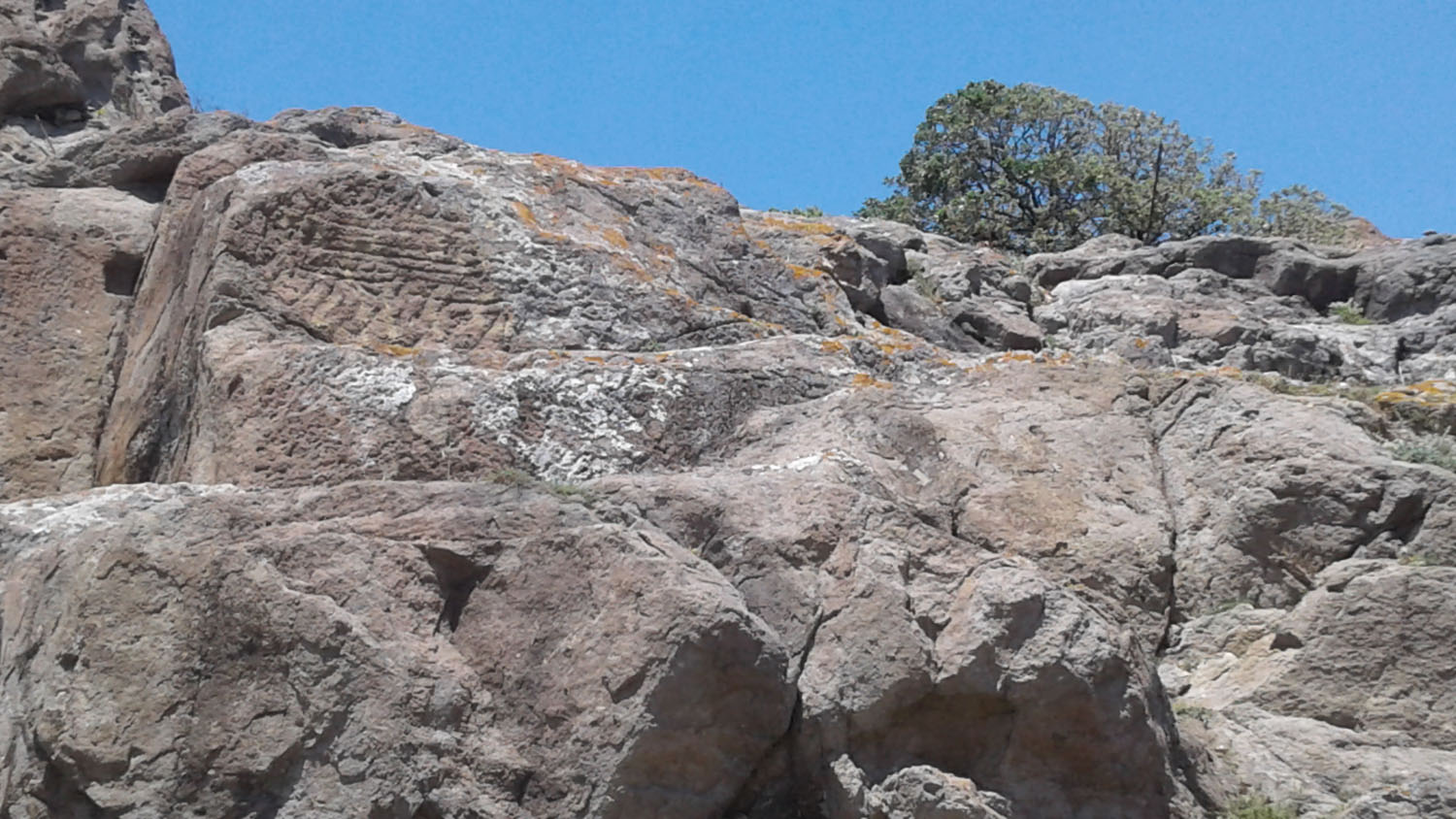
Rock-cut Constructions of Symbolic Character
Some rock-cut constructions could be of symbolic character and associated with mystery rites of initiation and worship of deities, as is known to have occurred since the Bronze Age in high places, on hills and mountains. Fragments of female figurines of the Archaic, Classical and Hellenistic periods have been found at various points on the peninsula and it is suspected that the entire area was linked with one or more female deities of nature, such as the goddess Lemnos, a sanctuary of which was excavated at ancient Hephaistia. The goddess Lemnos is associated also with the Phrygian goddess Cybele, who is linked with rock-cut constructions and was later conflated with Artemis, also a nature goddess. Because Cybele and Artemis are goddesses of crossroads, entrances, boundaries and points of transition, it is possible that they were worshipped on the kastro peninsula. Some fragments of female figurines and some pottery sherds found next to a stone construction in the southeast, at a nodal point with open vista of the sea and the harbour, could point to the existence of an open-air altar, since harbours too are points of change and transition.
The linking of the sanctuary of the chthonic and marine deities the Kabeiroi, which survives in the northeast part of the island, with activities of this kind is not without foundation. Moreover, the stone relief with representation of an altar with flame, a snake and a pig, as well as a horseman, which represented a deceased person, could be correlated with such activities. The traveller Alexander Conze wrote in 1858 that this work had been found in the castle (but it was in the possession of the British Consul at the Dardanelles).
A solid rocky outcrop on the northwest side of the kastro, on the terrace near the west postern gate, conspicuous in which is a deep, rectangular, rock-cut recess, may well be associated with the cult of Cybele. This type of shrine is encountered frequently in the East and specifically in Phrygia. To the southeast of the rocky outcrop is a row of boulders – it refers to remnants of a Pelasgian fortification wall – which is related probably to the sanctuary and together with it formed a complex.

Dating of the Rock-Cut Constructions
Many rock-cut constructions have been obliterated due to continuous habitation. The Byzantines and then the Venetians and the Ottomans constructed fortifications in the north part of the peninsula, thus partly destroying earlier indications of human activity. Other constructions were lost under twentieth-century buildings at the foot of the hill, on the outskirts of the city, while another significant part of the rock, to the south, was blown up in the 1950s.
The ravages of time and natural phenomena, and even more so human action, have affected and altered the natural and manmade relief of the peninsula, making it difficult to date precisely the constructions cut in the living rock.
